The final determination of Anti-Dumping/Counterveiling Duty (AD/CVD) rates for imports of crystalline Silicon solar cells and modules from Cambodia, Malaysia, Thailand, and Vietnam (CMTV) by the Department of Commerce on April 21 might seem like the latest salvo in an increasingly challenging and complex web of trade issues facing the solar industry. And while there were some surprises in the rates, for industry observers who have been following the case, this was simply another data point in an increasingly complex web of trade issues facing solar.
Why 3,500% duties will have minimal near-term market impact
The headlines announcing 3,500% tariffs on solar panels are as breathless as they are meaningless to the near-term supply picture. Yes, three Cambodian companies were assessed combined AD/CVD duties of over 3,500%, which based on Cambodia’s average declared import value, would put a module into the U.S. market at a net cost of over $9.50/w. But prohibitively high rates for Cambodia were anticipated, which is why we’ve seen imports into the U.S. from Cambodia drop from 652 MW in August 2024 to 140kW in February 2025.
Although the numbers are most dramatic out of Cambodia, we’ve seen significant reductions in module imports from the CMTV countries, from roughly 4 GW in August 2024 to just over 1 GW in February 2025. The market, and supply chains, are adjusting.
The upshot of the CMTV AD/CVD case goes beyond prohibitively high published rates – but rather the consideration of “trans-national” subsidies in calculating the anti-subsidy (or CVD) side of the tariffs. Why this is vitally important to how the U.S. industry evolves, is many manufacturers were gleefully announcing the migration of their factories from the CMTV countries to Indonesia, Laos and other exotic locations. If a new trade case is filed against those countries, and we assume a consistent fact-set, then rates for those locations will likely be in line with what we’re seeing on the current case.
So, the simple answer for how companies are projecting they’ll avoid these duties may end up creating significant complexity and risk in the very near future.
Enter U.S. manufacturing (but look closely)
The surest way to mitigate the risk of a tariff is to build and source the product here. And since the IRA was passed we’ve seen phenomenal investment in U.S. solar module manufacturing capacity. This ramp is offsetting the decline of imports. But what’s lagging is cell manufacturing, as this is a significantly more complex and expensive process, which means many of the U.S. assembled solar panels are still reliant on imported cells for the next year or two.
With the declared value of a cell roughly half the value of a finished module you start to see pathways emerging for market viable importation of cells to feed U.S. factories. But this is where buyer due diligence is essential. Reference the publicly available tables and audit the viability of the upstream supply chains. Will they still be viable when you need the product, and will the company be able to support warranty claims in the future? There is no shortage of “too good to be true” representations being made by lower tier vendors, and while the price points might be temping, they’re likely not durable once inventories are depleted.
The other challenge facing U.S. manufacturing is the IEEPA tariffs (tariffs brought by the International Emergency Economic Powers Act), especially on China. Although a lot of the pieces and parts U.S. assemblers are sourcing from Chinese companies are low dollar value, if you assume they cost .05/w in aggregate, with a 145% IEEPA tariff, the cost now goes up to just under 12.5/w. That delta effectively “gives back” their 45X manufacturing tax credit for module assembly. For those that are manufacturing crystalline cells in the U.S. but sourcing wafers from China, the economics become very challenging, very quickly.
Module pricing will undoubtedly move up from here as the market passes along tariffs and the increased costs to manufacture in the U.S.
Where we go from here
If there’s anything that unites the downstream and the upstream of the U.S. solar industry, it’s the need for certainty. Utility-scale projects take just as long to develop and build as cell and wafer factories. Given the dynamic nature of the news cycle and moving target IEPPA tariffs and the potential early phase out of solar specific IRA provisions, no one wants to “bet wrong” on a multi-year high capex investment.
While advocating for eased trade restrictions is likely a complete non-starter in the current administration, preserving the Inflation Reduction Act, on both the supply and demand generation incentives, is something the entire industry should be rallying behind.
Beyond achieving policy certainty, market participants need to re-evaluate their supply chain strategies and partners. Although the low-cost option is always tempting, buyers must consider the risks associated with those suppliers and ensure they’re sufficiently protected through tight contracts, quality audits and examining the claims through the lens of a healthy dose of common sense. Alternatively, partnering and working with vendors outside the scope of the higher IEEPA rates or AD/CVD cases, is also a prudent step.

Brian Lynch leads REC Americas strategy and policy.
The views and opinions expressed in this article are the author’s own, and do not necessarily reflect those held by pv magazine.
This content is protected by copyright and may not be reused. If you want to cooperate with us and would like to reuse some of our content, please contact: editors@pv-magazine.com.



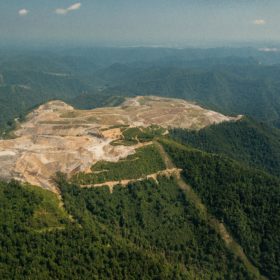
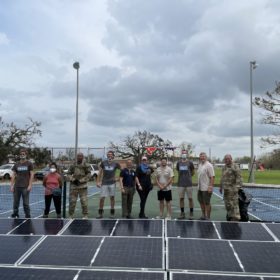
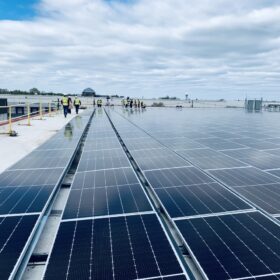
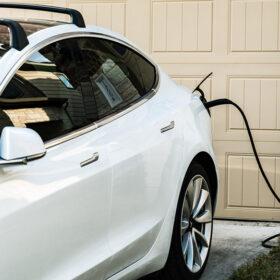
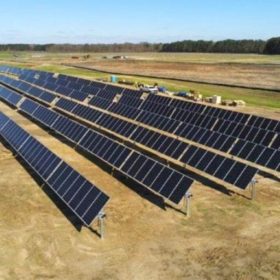
By submitting this form you agree to pv magazine using your data for the purposes of publishing your comment.
Your personal data will only be disclosed or otherwise transmitted to third parties for the purposes of spam filtering or if this is necessary for technical maintenance of the website. Any other transfer to third parties will not take place unless this is justified on the basis of applicable data protection regulations or if pv magazine is legally obliged to do so.
You may revoke this consent at any time with effect for the future, in which case your personal data will be deleted immediately. Otherwise, your data will be deleted if pv magazine has processed your request or the purpose of data storage is fulfilled.
Further information on data privacy can be found in our Data Protection Policy.